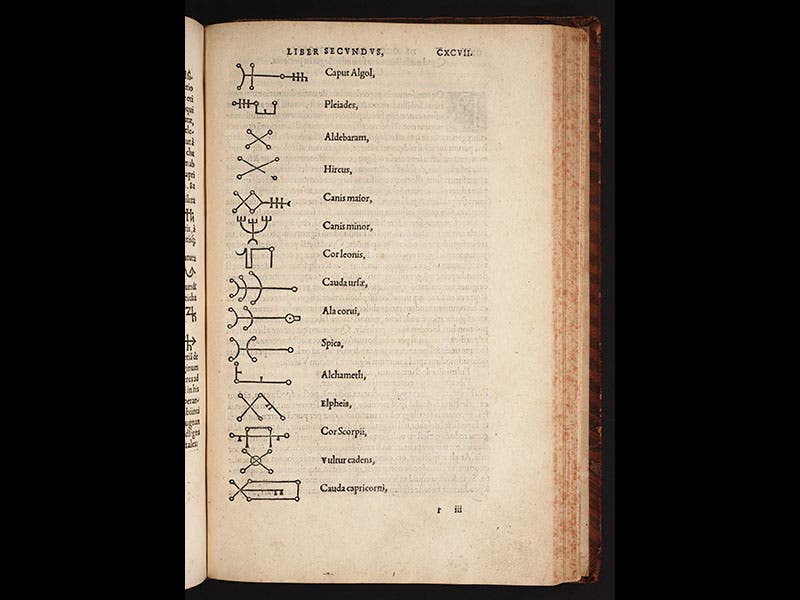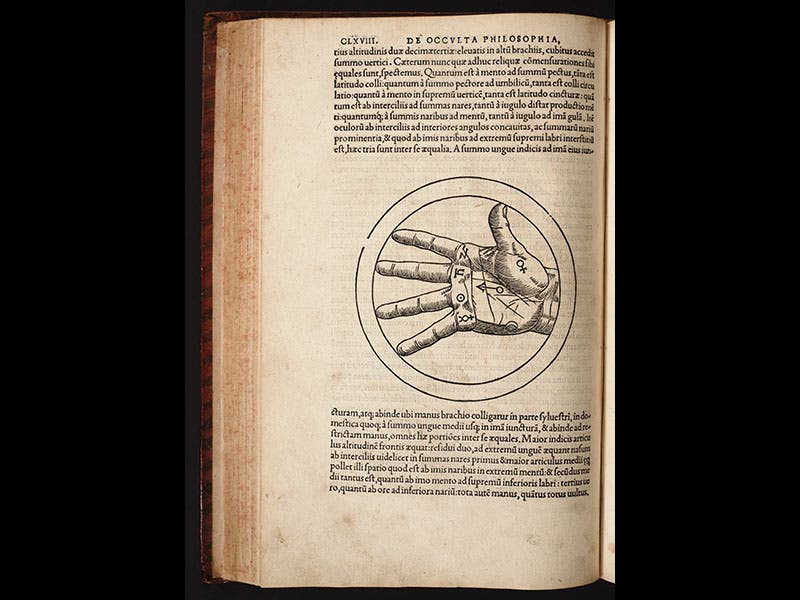Scientist of the Day - Cornelius Agrippa




Heinrich Cornelius Agrippa, a German authority on natural magic, was born Sep. 14, 1486. Agrippa was heir to a tradition that began with two Florentines, Marsilio Ficino and Pico della Mirandola, who believed that the universe is an intricate network of sympathies and correspondences that connect all things--planets, minerals, animals, organs of the human body, signs of the Zodiac, the 9 orders of angels. The truly wise man, the magus, could perceive these correspondences and manipulate them for good ends; such manipulations of cosmic forces was called natural or white magic. Black magic added the agency of demons and was not the proper domain for a magus. Agrippa considered himself a magus, and he wrote the first full-blown treatise on natural magic, De occulta philosophia libri tres (Three books on occult philosophy), first published in 1533. We have this first edition in our History of Science Collection.
The images above, selected from Agrippa’s 1533 book, show: magic squares and sigils that will attract the influence of Jupiter and Saturn (second image); a “Vitruvian” figure, demonstrating the ideal proportions of the human form (third image); sigils for 15 prominent stars or star groups, such as Algol and Spica (fourth image); and a plan of the hand for the chiromancer (fifth image). Although natural magic may seem unscientific to modern eyes, it was in fact an important precursor to 17th-century experimental science, because Agrippa and other magi had to do a lot of observation and experimenting in order to determine how the forces of nature operated, at a time when few natural philosophers were doing any experiments at all.
The only contemporary portrait of Agrippa was that on the title-page of his book, and it became the basis for all later representations (first image).
Dr. William B. Ashworth, Jr., Consultant for the History of Science, Linda Hall Library and Associate Professor, Department of History, University of Missouri-Kansas City. Comments or corrections are welcome; please direct to ashworthw@umkc.edu.







